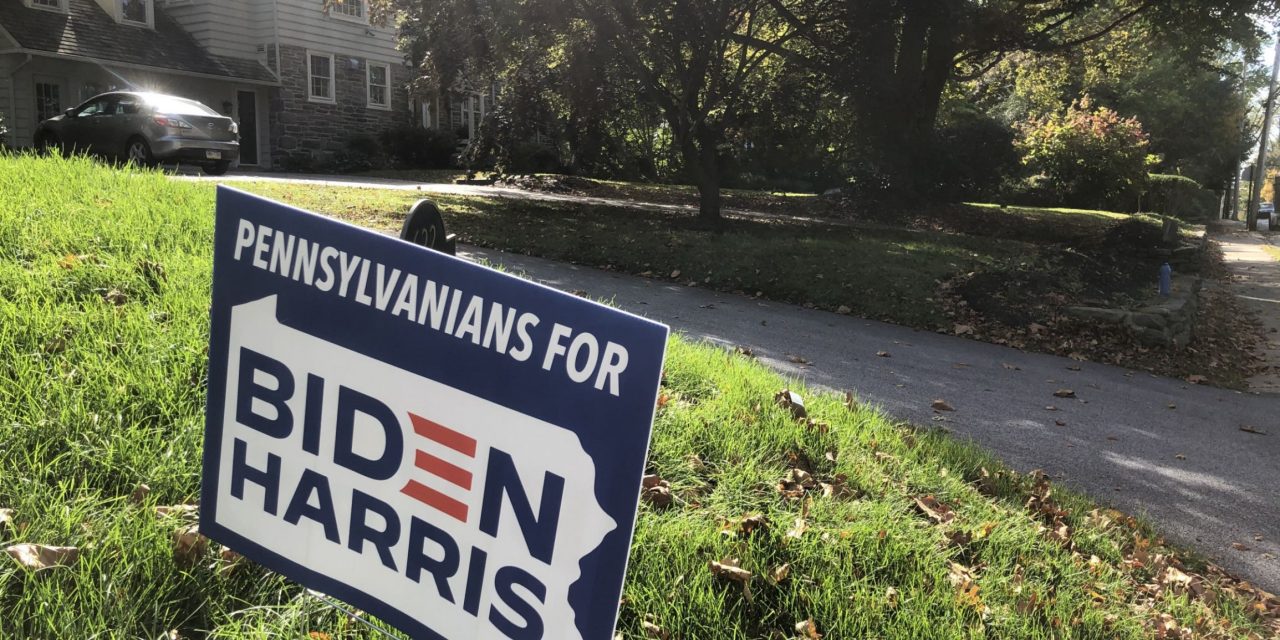Despite Donald Trump’s efforts to reprise Richard Nixon’s 1968 law-and-order message, Joe Biden defeated him by rolling up big margins in the suburbs of cities like Milwaukee, Detroit, Philadelphia, and Atlanta. It’s true that Biden overwhelmingly carried those cities, but analyses by Harry Enten of CNN and Nate Cohn at the New York Times show that his net gain of urban votes was lower than Hillary Clinton’s in 2016. The suburbs elected Biden. But before Democrats celebrate, there are areas of concern for them as well as Republicans when it comes to the lawns and leafy streets surrounding American cities.
First, despite the Trump campaign’s hapless effort to proclaim that scary big city machines stole the election, a dive into urban returns shows why that can’t possibly be so. In Georgia, black turnout increased relative to 2016, but less so than other groups, and the black share of the electorate fell from 27.6 percent to 27.0 percent. This was much lower than the 30 percent who showed up for Obama’s 2012 campaign. Precinct-level data show Biden improved on Hillary Clinton’s performance by 7 percent in high-income areas, by 6 percent where college-graduates are a majority, and by 5 percent in Obama-Trump polling places. Biden actually did worse than Clinton in only two kinds of precincts: ones that are at least 80 percent black or majority Latino.
This pattern held true in the Northern cities, too. In Detroit, Biden actually got 1,000 fewer votes than Clinton, while Trump added five thousand. Only in Milwaukee did the Democrats walk away with a bigger net-vote advantage than in 2016, but it was only an improvement of 3,000 and Trump actually saw the higher percentage improvement.
The suburbs were where Democrats cleaned up and won important states. The 80,000-vote net gain Biden pulled out of the Philly burbs easily eclipsed Trump’s 45,000 margin of victory in Pennsylvania in 2016. In the Detroit suburbs and non-urban parts of Wayne County (where Detroit is located), Biden netted 120,000 more votes than Clinton, which dwarfed Trump’s 10,000 statewide victory in 2016. In the suburban parts of Milwaukee and surrounding counties, Biden’s vote total was 25 percent above Hillary’s while Trump’s only added 12 percent to his 2016 performance. That alone was sufficient to erase Trump’s previous 23,000-vote statewide margin of victory. And, as Nate Cohn’s notes, in Georgia “Mr. Biden ran well ahead of Hillary Clinton in well-educated, wealthy and increasingly diverse precincts around Atlanta, while making relatively few gains elsewhere in the state.”
The good news for the Democrats is that these numbers were good enough to help Biden win 306 electoral votes and the election, while defending Gary Peters’s U.S. Senate seat in Michigan and forcing the two Senate contests in Georgia into January runoffs. The bad news is that suburban ticket splitting had real consequences for Democrats. They were unable to pick up a U.S. House seat in the Philly suburbs they were targeting, and a plurality of voters supported Georgia’s Republican Senate candidates even as Trump lost the state. Suburban voters turned on Trump but unlike 2018 they warmed up to Republicans down ballot. Freshman Democrats from the Des Moines and Oklahoma City suburbs lost their first reelection bid. Races in the New Jersey and Los Angeles suburbs are too close to call.
This gives hope to the GOP because their suburban troubles may dissipate without Trump on the ballot. It won’t take much Democratic slippage to flip the House in 2022. Yet, if their suburban slide continues, they’ll be even more reliant on pulling Trump-like numbers out of rural areas and, as my previous examination of the Pennsylvania results indicated, it’s not at all clear they can accomplish this. Their performance in the 2018 gubernatorial election, in which incumbent Democrat Gov. Tom Wolf was reelected, suggested that Trump’s rural margins are particular to him, and not the Republican Party as a whole. Trump leading a 2024 ticket would be a mixed blessing for Republicans.
The Democrats’ main problem is that that their urban/suburban coalition is fundamentally unstable. Typically, suburbanites choose to live outside of cities for carefully considered reasons—lower crime, better education–and they resist spending their tax dollars on urban priorities. Historically, the Republicans have had tremendous success in exploiting this wedge, and it’s not hard to foresee them making inroads in the suburbs again using messaging that’s less blunderbuss than Trump’s cries that low-income housing projects will be built next door and your life is in danger. What’s driving the cities and suburbs together is growing demographic and cultural similarities, but common economic interests are lacking.
The Republicans’ main problem, and perhaps the country’s main problem, is that these demographic and cultural changes are making the GOP reliant on rolling up huge margins in rural, white communities. The way Trump has done this is to get whites to vote with racial consciousness. This has been a boon to racists and white nationalists who have seen their once marginal views mainstreamed in the Trump Era. If the Republicans can’t reverse their suburban losses, they’ll feel compelled to continue along Trump’s well-trodden path in search of ever-greater margins with white voters–and their numbers are declining.
In July 2013, I predicted the Republicans would feel pressure to take this approach:
It appears that most Republicans are dropping the idea that they need to do better with Latinos and adopting the idea that they need to do even better with white voters…The most obvious way is to pursue an us vs. them approach that alternatively praises whites as the true, patriotic Americans, and that demonizes non-whites as a drain on the nation’s resources. This is basically the exact strategy pursued by McCain and especially Romney. It’s what Palin was all about, and it’s what that 47% speech was all about…
The problem is that these attacks have already been made, and they failed in even near-optimal circumstances. Accusing the Democrats of socialism, which is a race-neutral way of accusing the party of being beholden to the racial underclasses, has been proven insufficient. The only hope for a racial-polarization strategy is to get the races to segregate their votes much more thoroughly, and that requires that more and more whites come to conclude that the Democratic Party is the party for blacks, Asians, and Latinos.
That is, indeed, how the party is perceived in the Deep South, but it would be criminal to expand those racial attitudes to the country at large.
The Republicans are coalescing around a strategy that will, by necessity, be more overtly racist than anything we’ve seen since segregation was outlawed.
I revisited these ideas in November 2016 in my post-election autopsy, Avoiding the Southification of the North, in which I warned “if the Democrats let this become a racial fight between their multicultural base and the white rural counties of the North, that’s a recipe for the political Southification of the entire country. That’s what the GOP has been doing in a gradual way for 36 years, and it’s the basis for Trump’s coalition and for his reelection in 2020.”
Trump came up short in 2020, barely, because a lot of formerly Republican suburbanites, in the North and also in Sun Belt, were not comfortable with his overtly racist politics or his incompetance. They chose Joe Biden and Kamala Harris for a breath of normalcy, but these GOP suburbanites were less dependable in other races and should not be seen as reliable Democrats in future elections.
If the Democrats want to create a stable majority, they’ll have to become less reliant on the affluent professionals that ring our cities, and that means winning back some white working class voters. As a moderate, older, Irish Catholic politician Biden was the Democratic nominee best able to pick up some of these votes and he did that a little bit here and there such as northeastern Pennsylvania. But in many rural counties his numbers were worse than Hillary’s. With Trump doing better with Latinos and black men, Biden needed every professional suburbanite vote he could get. Luckily for him, he got them.
If the Republicans want to avoid being a white nationalist party, they have to find a way to win those affluent professionals back and keep making gains with urban voters. Susan Collins was the only Republican Senate candidate to run well ahead of Trump, putting together a broader coalition that was a little less dependent on working-class white men especially in rural areas. The problem for the other 49 GOP senators is that their base is essentially Trump’s base—white, narrow, and not growing.







